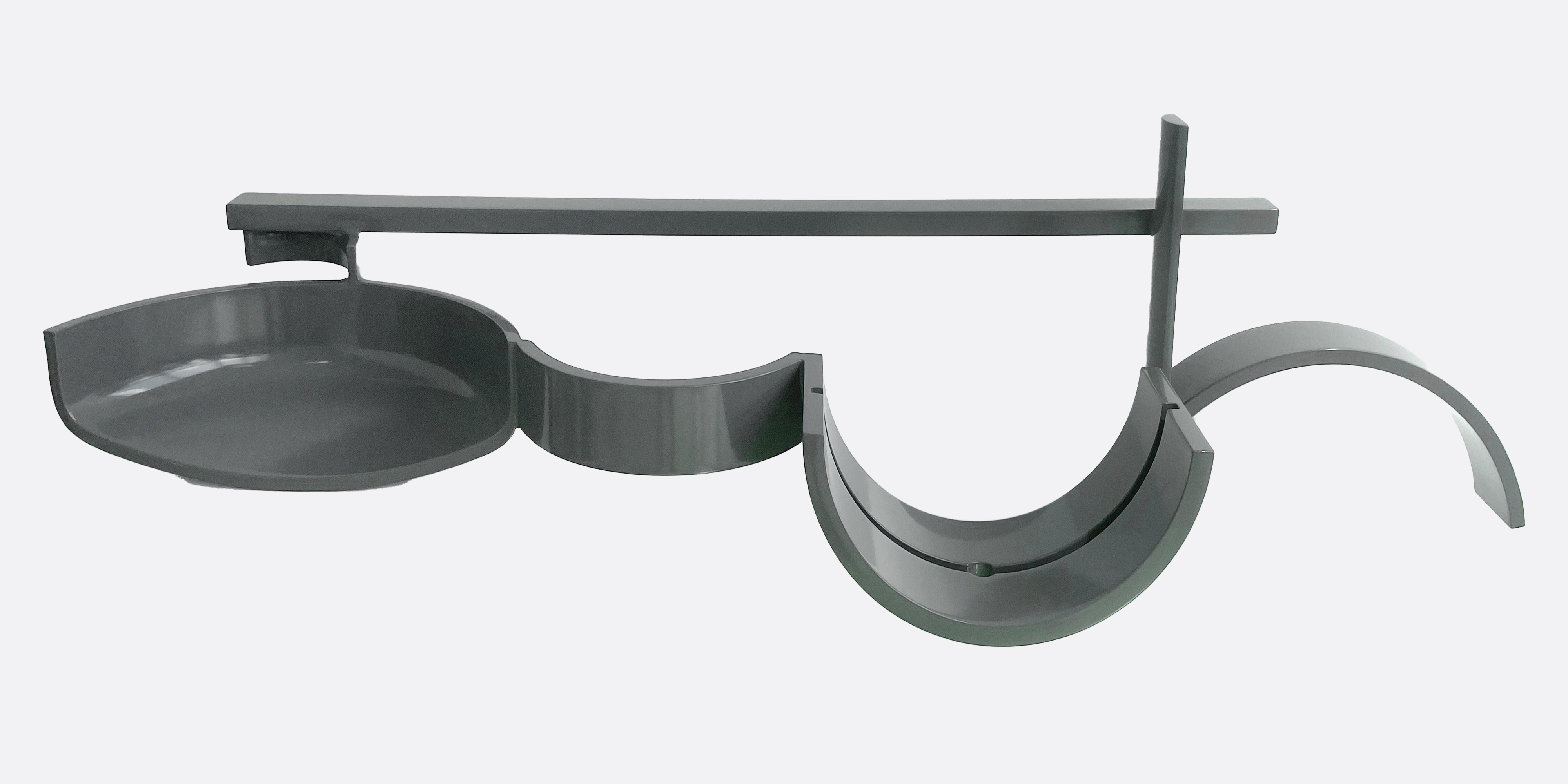McMullen Museum of Art
Permanent Collection
Anthony Alfred Caro (1924–2013)
Table Piece LXIII, 1968
Steel sprayed gray
McMullen Museum of Art, Boston College, Anonymous donation in honor of Nancy Netzer

Trained in the workshop of Henry Moore (1898–1986), Caro became the leading British sculptor of his generation. After encountering the sculptures of David Smith (1906–65) during a trip to the United States in 1959, Caro abandoned the semi-abstract style, executed in clay and bronze, that he had learned from his mentor. Instead, he began a new approach involving the collage-like process of welding and bolting together found industrial objects.
In 1966, art historian and critic Michael Fried directed Caro’s attention to the shared horizontal nature of the ground and tables, noting the more human scale of the latter. Fried encouraged Caro to create smaller sculptures that incorporated tables into their design. From that point on, Caro began experimenting with “table pieces” that encroach on the viewer’s space, making this approach a feature of his practice throughout his career.
In this early example, Caro utilizes balance and counterweight. Components dip in front of and spring over the sides of the table, creating suspense and unsettling the viewer. The table sculpture’s size, shiny painted surface, and composite nature endow it with the intimacy and tactility of painting of a still life and cloth draped over a table by Paul Cézanne (1839–1906, see image).


Nancy Netzer
Inaugural Robert L. and Judith T. Winston Director, McMullen Museum and Professor, Art History